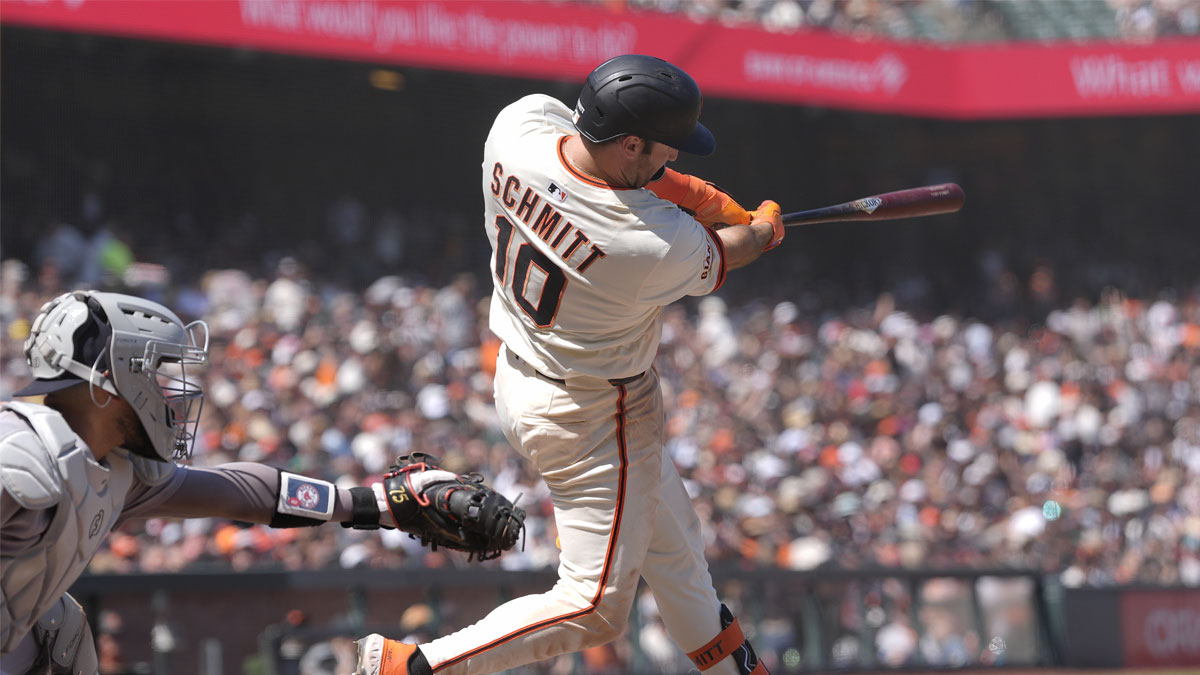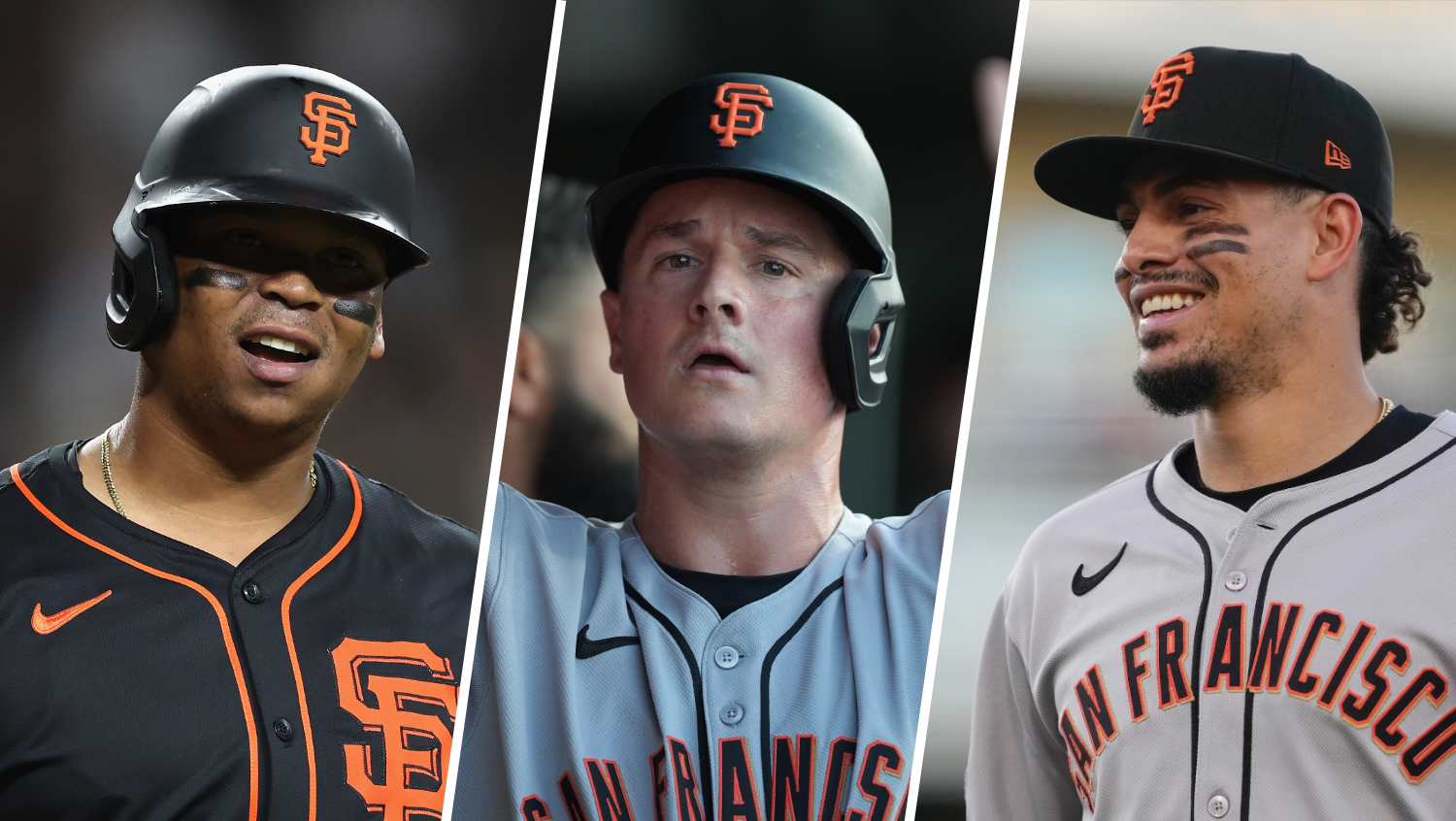If you wanted a true indication of how different the draft process was for the Giants over the past few months, you had to tune into MLB Network as they were on the clock with the 144th pick, their seventh and final selection.
The broadcast showed a Zoom call of 25 members of the organization, including scouting director Michael Holmes, former scouting director John Barr, assistant general manager Jeremy Shelley, trainer Eric Ortega and many of the organization's amateur scouts. You had to look closely to see the impact the big league side was having. Included on that call were Michael Schwartze and Jack McGeary, two baseball operations analysts who travel with the big league club full-time.
Gabe Kapler, his 13 coaches, and the supporting analysts and trainers have tried to find constructive ways to make use of an unexpected break this spring and summer. As part of that process, they jumped all-in on draft prep, helping Holmes and his staff prepare for a five-round process. On the Giants Insider Podcast last week, Holmes credited the big leaguers and the player development staff, led by Kyle Haines, for pitching in when their usual workloads were taken away by COVID-19.
With our All Access Daily newsletter, stay in the game with the latest updates on your beloved Bay Area and California sports teams!
"There were other avenues and different areas of our organization that we could take advantage of, whether it was Kyle Haines and the guys with player development, Kap at the major league level with some of his coaches," Holmes said. "We were really able to kind of spend time talking with those guys and kind of pick their brains on players, use that resource in a way that's beneficial to us. It really was a collaborative venture throughout the organization."
The Giants never expected their draft prep to go this way, but in an odd way, the first major baseball event of the summer represented much of what they believe in. When Kapler and general manager Scott Harris were hired last November, "collaboration" became a popular buzzword in the building. It was no surprise that Kapler, fired by the Phillies a few weeks earlier, got the job, in large part because he has a long working relationship with president of baseball operations Farhan Zaidi.
The Giants have tried to break down some traditional walls, something Kapler made clear even with his office at Scottsdale Stadium. It has two doors and he kept them open nearly all the time, encouraging coaches, analysts, trainers and players to use those two doors as a shortcut to other locations, and ideally stop in for a short chat. Trainers and analysts in particular were encouraged to spend more time in meetings with coaches, making every decision more a team effort.
Holmes has always believed that's a great method to take for draft prep, and this year it was necessary. Amateur scouts generally spend every night of the spring on the road, watching and evaluating as many young prospects as they can. It's a life full of Marriott points, fast food and regional flights, but in March, all scouts were grounded. The college and high school seasons lasted just a few weeks. First-rounder Patrick Bailey, for instance, saw his junior season at NC State end after just 17 games.
San Francisco Giants
Find the latest San Francisco Giants news, highlights, analysis and more with NBC Sports Bay Area and California.
"It is interesting what process-wise the shortened season meant from an evaluation perspective," Zaidi said. "Usually the draft season is just guys frantically crisscrossing the country, submitting a ton of reports on a ton of guys, and you get together in the draft room and you've got eight to 10 reports on every guy and you're figuring out the average grade. It's almost a bulk exercise. We had fewer looks and fewer reports, and it led to much deeper conversations about these players, about their skill sets, about their character, and I think in that sense the qualitative aspect of the evaluation became more important."
[GIANTS INSIDER PODCAST: Listen to the latest episode]
Holmes said his scouting staff embraced the new way. Over endless Zoom calls and phone conversations, they dug deep into evaluating the prospects who would make sense in a 160-player draft.
"What I mean by that is really talk swings, really talk deliveries, really talk arm actions," he said.
That's where the extra eyes can come in handy, and the Giants tried to leave no stone unturned. Holmes even checked in with 2019 first-rounder Hunter Bishop to get more info about Arizona State prospect R.J. Dabovich. A few days later, the Giants took Dabovich in the fourth round.
The prep for the draft was different and the two-day event had a new vibe, too. MLB told teams that their traditional "war room" could include just five people, and they had to practice social distancing. Holmes set up in a suite on the fourth level of Oracle Park and Zaidi did the same. Most others joined Zoom calls from their home offices.
In the end, for as different as the process was, the Giants ended up with the player they might have gotten anyway. Holmes -- who has known Bailey since high school -- and his staff heavily scouted NC State last year as they considered Will Wilson for their first pick. They knew Bailey well and followed up with Zoom calls after his junior season was cut short. Scouting those two first-rounders gave them extra looks at left-hander Nick Swiney, who ended up getting picked 67th overall.
[RELATED: Why Giants are likely to stay in-house for DH]
It'll take three to five years to know if this seven-player class is a good one, but the Giants felt good about their haul. Holmes said he can't remember being part of a scouting group that was more prepared for a draft than the Giants were this past January. When the sports world came to a halt in March, the Giants built on their prior work and embraced some new methods.
"We used every resource that was available to us," he said. "Gabe and his staff have been unbelievably supportive of our amateur department and our scouts feel that support from not only him, but every person on his staff. They were really engaged. They were happy to help, and I thought as an organization it was a really big building moment for us."


